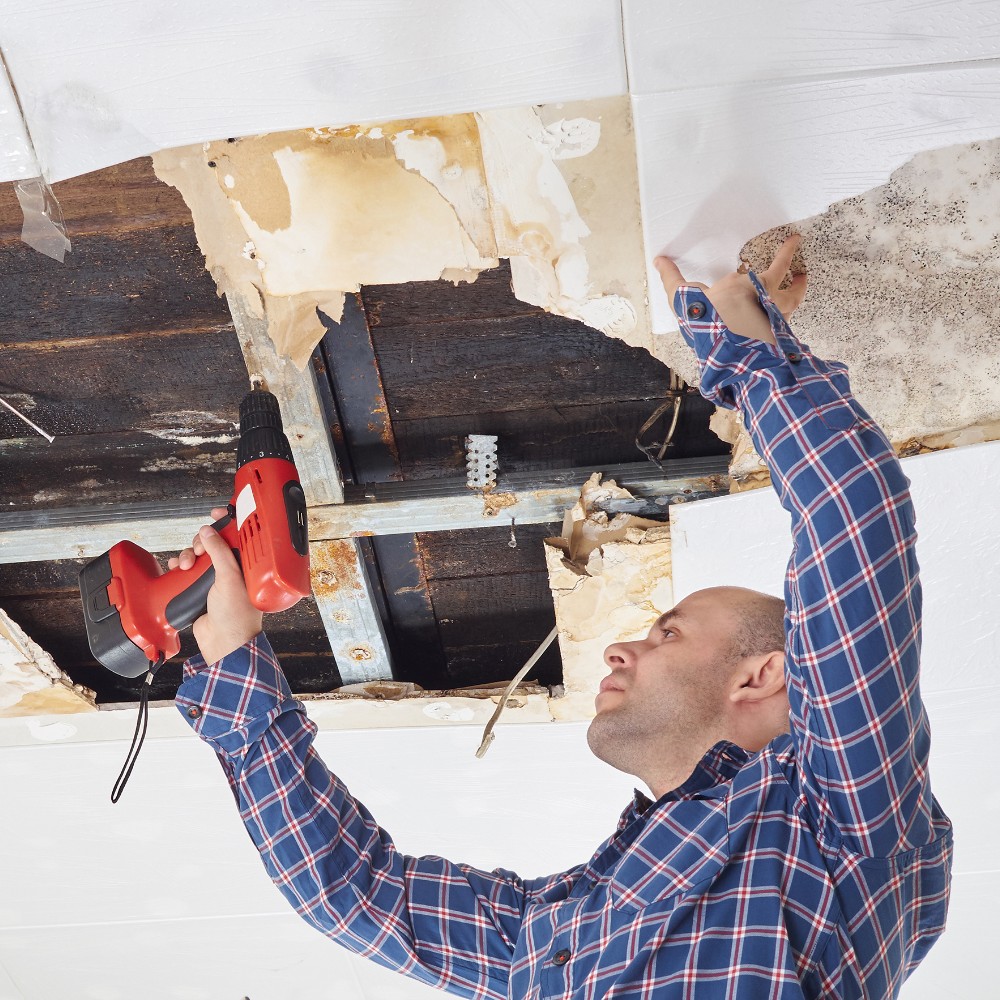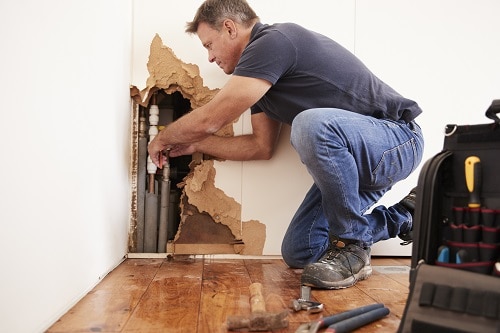Water Damage Restoration 101: Recognizing the Process and Expense
Water damage can strike all of a sudden, leaving home owners in a state of complication. Recognizing the repair process is necessary for efficient healing. From examining the damage to choosing the right provider, each action impacts the total result and price. Elements such as the kind of water damage and seriousness also play a considerable duty. What are the particular techniques made use of in restoration, and exactly how can one get ready for potential expenditures?
Sorts Of Water Damage

First Assessment and Inspection

Water Removal Methods
Following the first assessment, efficient water extraction strategies are used to mitigate damage and stop more issues. These strategies include making use of customized equipment such as completely submersible pumps and industrial-grade vacuums - Water Damage Restoration. The option of approach relies on the quantity of water present and the kind of products impacted. For standing water, submersible pumps are generally utilized for rapid elimination, while vacuum cleaners are optimal for removing water from carpets and upholstery. In addition, advanced techniques like water removal mats may be utilized for hard-to-reach areas - Water Damage Restoration. The objective is to eliminate as much water as feasible, lessening the capacity for mold and mildew development and structural damage. Prompt and effective water removal is essential in the overall water damage restoration procedure
Drying and Dehumidification Process
When the water extraction is total, the drying and dehumidification procedure ends up being crucial to restoring the afflicted location. This stage typically uses industrial-grade dehumidifiers and air movers to efficiently reduce dampness degrees. The dehumidifiers reel in damp air, eliminating excess moisture, while air movers flow air to accelerate dissipation. Surveillance equipment is usually utilized to track moisture and temperature level degrees, ensuring perfect drying problems. The duration of this process can differ relying on the level of the water damage and ecological elements. It is necessary to completely completely dry all influenced products, including wall surfaces, floor covering, and home furnishings, to avoid mold growth and architectural damage. Appropriate implementation of this action is important for a successful restoration result.
Cleaning Up and Disinfecting Damaged Areas
A thorough preliminary evaluation and inspection of influenced locations is essential to recognize contamination degrees when the drying out procedure is complete. Flood Cleanup Services. Reliable cleansing methods and proper products need to after that be utilized to remove debris and discolorations. Sanitization and disinfection techniques are crucial to guarantee that harmful virus are removed, bring back the space to a secure condition.
First Assessment and Examination
Before beginning any kind of repair initiatives, an extensive initial analysis and assessment of the influenced areas are vital for efficient cleansing and sanitizing. This procedure includes recognizing the extent of water damage, determining the resource of the water intrusion, and evaluating the products affected. Examiners normally search for indicators of mold and mildew growth, structural honesty problems, and damaged possessions. The analysis likewise consists of checking dampness degrees making use of specialized tools to assure no concealed water pockets remain, as these can bring about further difficulties. Documenting the findings is important for planning the following actions in the restoration procedure. A thorough preliminary assessment enables restoration experts to design a targeted strategy for effective cleaning and disinfecting, eventually minimizing damage and wellness risks.
Cleaning Up Techniques and Products
Reliable cleaning and sterilizing of water-damaged areas require a variety of strategies and products tailored to the particular products impacted. For porous surfaces like drywall and carpeting, extraction methods are important to get rid of excess wetness, adhered to by deep cleaning with specialized cleaning agents. Non-porous materials such as tile or steel can be cleansed making use of commercial-grade cleaners that efficiently eliminate contaminants. Vapor cleansing is another reliable strategy, particularly for rugs and upholstery, as it makes use of heats to eliminate bacteria and mold and mildew (Flood Cleanup Services). Additionally, green items are significantly preferred for their security and efficacy - Water Damage Restoration. Ultimately, choosing the suitable cleaning approaches and items not only guarantees instant cleanliness however likewise aids in protecting against more damage and wellness threats connected with water invasion
Sanitization and Disinfection Techniques
When resolving water damage, appropriate sanitization and disinfection techniques are necessary to guarantee the safety and health and wellness of the afflicted environment. After initial cleaning, surface areas have to be treated with appropriate disinfectants to remove pathogens, mold and mildew, and germs that grow in moist problems. Usual approaches consist of making use of EPA-approved chemical anti-bacterials, which can be used with spraying or cleaning methods. In addition, ultraviolet (UV) light systems can efficiently sanitize areas by reducing the effects of microbes without extreme chemicals. The choice of approach commonly relies on the kind of materials impacted and the degree of contamination. Inevitably, comprehensive sanitization not only brings back a secure space but also helps stop future health and wellness threats connected with sticking around moisture and mold and mildew development.

Repairs and Restoration Options
Evaluating the damage brought on by water exposure is essential for establishing the appropriate fixings and restoration options. Homeowners might encounter numerous concerns, consisting of damaged drywall, deformed flooring, and jeopardized structural components. Depending upon the extent of the damage, fixings may entail changing areas of drywall, setting up brand-new floor covering, or enhancing architectural beam of lights. In cases of extreme damage, complete replacement of damaged materials may be needed. In addition, expert conservators typically advise using wetness meters to assess concealed moisture levels before choosing the most effective course of action. It is essential to act immediately to stop mold and mildew development and more wear and tear. Choosing the appropriate alternatives not only brings back the residential property but additionally guarantees long-lasting safety and capability.
Aspects Affecting Restoration Costs

The degree of water damage directly influences the repair costs house owners can expect to sustain. Aspects such as the resource of the water, the period of exposure, and the afflicted materials considerably influence prices. For circumstances, clean water you could try these out damage from a broken pipe is generally much less costly to restore contrasted to damage triggered by sewage. Furthermore, the level of contamination determines the demand for specialized cleansing and disposal solutions, even more boosting costs. Geographic area likewise contributes, as local labor prices and schedule of remediation solutions can differ. The seriousness of the feedback affects costs; quicker interventions generally lead to reduce overall expenditures by preventing additional damage. Comprehending these aspects is important for property owners when approximating remediation costs.
The 3 main kinds of water damage are classified based on contamination degrees: tidy water, gray water, and black water. A comprehensive first analysis and inspection are vital steps in the water damage restoration procedure. For standing water, completely submersible pumps are normally used for fast removal, while vacuums are ideal for drawing out water from rugs and furniture. The level of water damage straight influences the remediation costs home owners can expect to sustain. Clean water damage from a busted pipe is usually less pricey to restore contrasted to damage triggered by sewage.